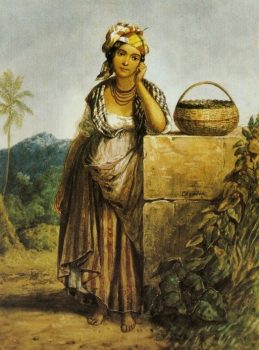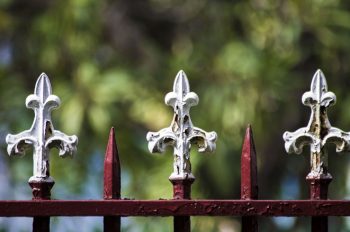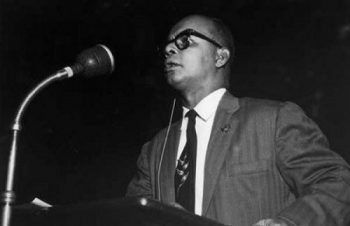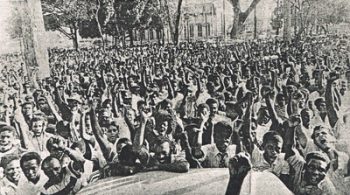
Visual Sketch of Woodford Square by The Thinking Insomniac
Source: thinkinginsomniac.files.wordpress.com/2011/02/visual-survey-woodford-sq.jpg
What is contested heritage and why is Woodford Square a contested heritage site? Contested heritage refers to heritage where there are multiple and competing histories. We have previously explored this topic in an earlier blog, entitled Contested Heritage in 2020 which you can read HERE. Woodford Square fits squarely into this description because it was named after a Governor who did much for the development of Port of Spain and the colony, but he also maintained slavery and discrimination against non-white peoples. The square was originally named Brusnwick Square but was renamed Woodford Square in 1914 as the British Empire sought to distance itself from everything German. Moreover, the Square went on to serve an important function as time passed—a place for the people of Trinidad and Tobago to meet and express grievances thereby enabling social and political movements to take place. You can get more historical details HERE, in our blog entitled 100 Years of Woodford Square, and in our YouTube VIDEO.
Moreover in contemporary times Woodford Square is a Heritage District. This is comprised of buildings of major architectural and historical significance surrounding Woodford Square.
Governor Woodford
In The Book of Trinidad (1992), Gerard Besson and Bridget Brereton wrote that “Sir Ralph Woodford was one of the greatest Governors that Trinidad ever had” (p. 111). Woodford was the fourth British Governor of Trinidad from 1813 to 1828. He was the longest serving governor in the island’s history. As Governor, Woodford did many things to improve Trinidad including improving trade via a round-island steamer service, land reclamation which changed the Port of Spain Waterfront and opened primary schools for elite children.

Portrait of Sir Ralph James Woodford, 2nd Bt
by Charles Turner, after Sir Thomas Lawrence
Source: The National Portrait Gallery, London
https://www.npg.org.uk/collections/search/portrait/mw195003/Sir-Ralph-James-Woodford-2nd-Bt?
Under Woodford’s administration as Governor, the face of Port of Spain was significantly changed. Woodford’s Secretary, Mr Philip Reinagle was the architect who designed and built two of the Cathedrals in Port of Spain—the Cathedral of Immaculate Conception and the Holy Trinity Anglican Cathedral. Woodford was responsible for upgrading the footwalks (pavements) and streets of Port of Spain. He also bought the Paradise Estate in 1818, part of which became the Queen’s Park Savannah. While the previous British Governors of Trinidad were military men whose main concerns were maintaining order and being ready for external threats, Woodford’s administration brought new changes—to the landscape as well as to governing the people. It was Woodford who enacted the (already existing) racist colonial laws in Trinidad.
Woodford was Governor of a slave colony, and one which had a varied population. Woodford enforced repressive and humiliating laws against non-whites. Many of these people were French free coloureds and free blacks, who had migrated to Trinidad under the Cedula of Population (1783). Some of them owned land and slaves and some were very wealthy and educated. When the British took over Trinidad in 1797, they treated all free coloureds and blacks with hostility. The law stated that free coloureds and free blacks had to carry a lighted torch when out at night, they were not allowed to carry a stick to protect themselves in the city, there was a 9:30 pm curfew restricting their movement (Besson & Brereton, 1992). Coloured militia officers were demoted and assigned to white sergeants. Qualified doctors of colour were stopped from practicing medicine and replaced with unqualified white “doctors.” Woodford enacted these laws and he even went so far as to demarcate certain plots in Lapeyrouse cemetery for whites only. The punishment for these “crimes” was often hanging, jail or banishment. Brereton (1992) points out that the fears that free coloureds in Trinidad could start a violent political upheaval dominated the policies and attitudes towards them into the 1820s. Woodford felt that the free coloureds of Trinidad had too many freedoms, were too rich and too closely ingratiated to white society. He tried to set a legal limit on how much land they could owned but he was unable to do so. However he was able to use social pressure. For example, when the Anglican Cathedral was opened, seating arrangements were according to race, and coloureds had to sit on inferior benches at the back with the enslaved population. The coastal steamer also had segregated seating. The coloureds were especially upset by the law in 1822 which would make it possible for a free coloured or black person to be flogged for a minor offence based solely on the word of a city magistrate (a white slave owner).

Image: Michel-Jean Cazabon – Mulatto Girl
Source: Arc The Magazine.com
(http://arcthemagazine.com/arc/2013/07/michel-jean-cabazons-bi-centenary-celebration/)
Elite free coloureds found that this was too much, and they pushed back. Jean-Baptiste Phillipe emerged as a leader of the free coloureds in Trinidad in the 1820s. The coloured leaders petitioned the Secretary of State in 1823 on the issue of their rights and they were successful to an extent. In 1826 the Colonial Office ordered Woodford, who did not support the campaign, to repeal some of the laws discriminating against free coloureds. Governor Woodford passed away in 1828, he did not live to see the free coloureds of Trinidad have their victory which came in 1829. In March 1829, an Oder in Council was issued by the British Government that gave free coloureds and free blacks in Trinidad full legal equality and civil rights with whites. Trinidad was therefore the first British West Indian colony where free coloureds and blacks had full civil rights (Brereton, 1992).

Image: Jean Baptiste Philippe’s book
Source : National Archives of Trinidad and Tobago
Woodford Square and the making of Trinidad and Tobago

Woodford Square Sign
Source: cityofportofspain.gov.tt (Copyright: (c) 2011 Kerwyn Wilson Photography)
“Woodford Square is in a very real sense the civic heart of Port of Spain and one can say of Trinidad and Tobago’’
Besson (2018) as quoted from Woodford Square, National Trust of Trinidad and Tobago, YouTube Video.
Woodford Square has been used as a gathering place for celebration and activism alike. Significantly it has allowed the people of Trinidad and Tobago a place for expressing their opinions publicly before the days of social media. Some of these events in a historical timeline include:
- The 1903 Water Riots: Brunswick Square (later renamed Woodford Square) was where the Ratepayers Association sparked the beginning of the Water Riots on March 23rd, 1903.
- After World War One the discontent among the population manifested in labour unrest, Woodford Square was the spot where meetings and protests took place. From 1919 onwards Woodford Square was used as a meeting place by the Trinidad Workingmen’s Association (TWA) and workers who went on strike. This was the birth of the labour movement in Trinidad and Tobago.
- Before there was social media, there was Woodford Square. This Square has provided a public forum for Trinbagonians long before Facebook. Its use by Dr Eric Williams for the political education of the public is well known. In the 1950s Williams gave lectures in Woodford Square on several issues including Caribbean history and culture. The lectures were designed to help citizens be informed and make their own opinions of their past and the contemporary conditions. Steumpfle (2018) points out that Woodford Square was an ideal place for Williams’ presentations because of its powerful symbolism.

Woodford Square Cast Iron Fence
Source: Denzel Reid
“An attractive public space in the heart of the city, Woodford Square comprised an entire block with an iron fence around its perimeter that offered bot a sense of enclosure and an openness to the surrounding area. This included the Red House (seat of the colonial government), courts, town hall (relocated uptown for much of the post-war era owing to a fire), public library, Anglican Cathedral and businesses on Frederick Street—essentially a microcosm of official Trinidadian society and its various discourses.”
(Steumpfle, 2018, p. 289).
On 19th July, 1955 Williams gave the Square its other name:
“With a bandstand, a microphone, a large audience in slacks and hot shirts, a tropical subject for discussion, the open air and a beautiful tropical night, we have all the essentials of a university. Now that I have resigned my position at Howard University in the USA, the only university in which I shall lecture in future is the University of Woodford Square and its several branches throughout the length and breadth of Trinidad and Tobago”.
Williams, 1955. Steumpfle (2018, p. 289)
Williams gave Woodford Square a new name and the wider population utilized it. In his autobiography Williams claimed that the University of Woodford Square became “a centre of free university education for the masses, of political analysis and of training in self-government for parallels of which we must go back to the city state of Athens” (Ryan, 2009 as cited in Steumpfle, 2018). Williams rebranded the Square as a university thereby expanding its historic role as a critical public space of discussion and learning. Williams brought a sense of formality with planned lectures about the context of life in Trinidad and Tobago, in the Caribbean and global context.

Dr Eric Williams addresses the Nation
Source: https://wired868.com/2020/02/09/noble-waking-up-from-the-educational-dream/
Steumplfe (2018) writes that by 1956 Woodford Square had become the main point for the mobilization of the PNM. Williams gave several anti-colonial speeches in Woodford Square, including one on 21st March 1960 about British imperial arrangements with the USA over Chaguaramas. A march protesting the American occupation of Chaguramas on April 22nd, 1960 began as a PNM rally at Woodford Square. His anticolonial rhetoric was strongly expressed in his speech, Massa Day Done, which was a public lecture at Woodford Square, on 22nd March 1961.
- In 1970 Woodford Square was a key gathering spot for the lectures and rallies of the Black Power Movement of 1970. Continuing in the tradition that Dr Williams himself started, powerful speeches were delivered on the Woodford Square Bandstand by the Black Power leaders. In the post-independence era Woodford Square has become a place of airing grievances and discussing public issues.

Picture of Black Power Rally at Woodford Square, 1970
Source: Moheni, Embau, Trinidad Guardian
How do we reconcile these two historical themes? While Governor Woodford was instrumental in the development of Port of Spain and Trinidad, he was the hand of the Colonial Government which maintained slavery and discrimination against non-whites. Especially as we have recently observed Emancipation Day on August 1st, we should be aware that the legacies of colonialism and slavery are still with us today. On the other hand, Woodford Square has played an integral part in the development of Trinidad and Tobago. Today, the name Woodford Square is synonymous with public debate, a place of learning—The University of Woodford Square, a place for meetings and protests and a green space in the capital city.
Author: Karishma Nanhu
Sources
Angelo Bissessarsingh. Virtual Museum of Trinidad and Tobago.” Angelo Bissessarsingh’s Virtual Museum of Trinidad and Tobago Public Group, www.facebook.com/groups/191766699268/?post_id=10158307327714269.
Besson G. & Brereton B. (1992). The Book of Trinidad (Third Edition). Port of Spain: Paria Publishing Company Limited.
Besson G. (2011). Woodford’s Years. The Caribbean History Archives. http://caribbeanhistoryarchives.blogspot.com/2011/08/woodfords-years.html
Brereton, B. (1992). The Free Black and People of Colour. In Besson G. & Brereton B., The Book of Trinidad (Third Edition). Port of Spain: Paria Publishing Company Limited.
Gouverneur Chapeau Paille. Woodford’s Years. (2000) Paria Publishing Company Limited. http://www.pantrinbago.com/Landofbeginings7.html
Discover Trinidad & Tobago. “The Queen’s Park Savannah: Touring Trinidad.” Discover Trinidad & Tobago, 26 Jan. 2020, www.discovertnt.com/articles/Trinidad/Touring-Trinidad-pt-2-Around-the-Savannah/166/3/23#axzz6RZD5jwUq.
Martin, Tony. Caribbean History: from Pre-Colonial Origins to the Present. Routledge, Taylor & Francis Group, 2016.
Moheni, Embau. (2016). Black Power: 46th Anniversary of the T&T Revolution of 1970. http://www.classifieds.guardian.co.tt/lifestyle/2016-04-21/black-power%E2%80%8846th-anniversary-tt-revolution-1970
https://www.youtube.com/watch?v=Wk0onShS5TQ
NALIS > Resources > Subject Guide > Governors > Governors of Trinidad and Tobago: 1804-1839.” NALIS, www.nalis.gov.tt/Resources/Subject-Guide/Governors/Governors-of-Trinidad-and-Tobago-1804-1839#tabposition_25173.
National Portrait Gallery, London. https://www.npg.org.uk/collections/search/portrait/mw195003/Sir-Ralph-James-Woodford-2nd-Bt?
Stuempfle, Stephen. (2018). Port of Spain: The Construction of a Caribbean City, 1888-1962. Mona: The University of the West Indies Press.
Visual Sketch of Woodford Square by The Thinking Insomniac. thinkinginsomniac.files.wordpress.com/2011/02/visual-survey-woodford-sq.jpg
Woodford Square. National Trust of Trinidad and Tobago. (April 17th 2018).
